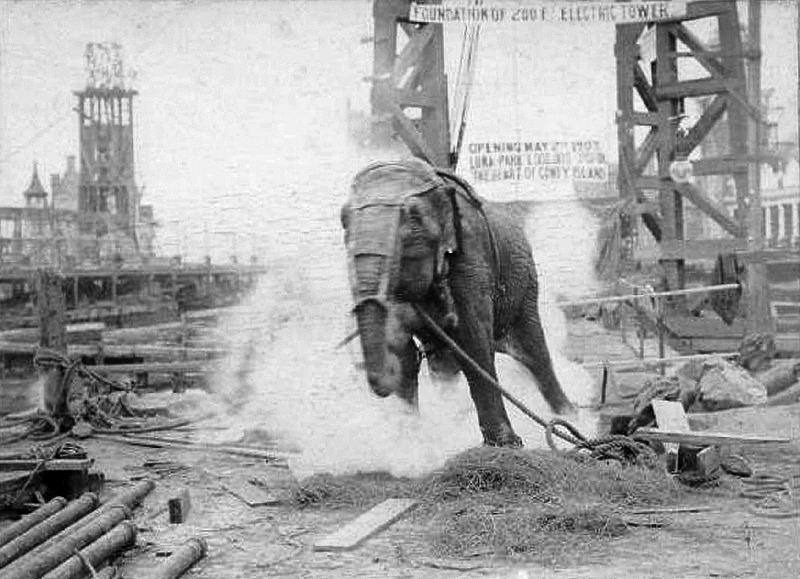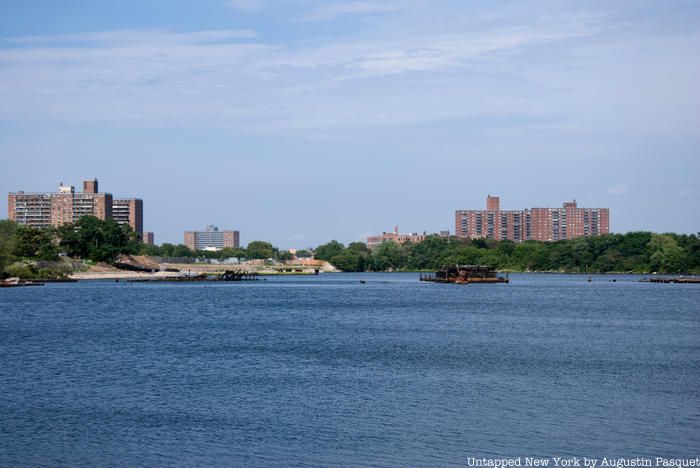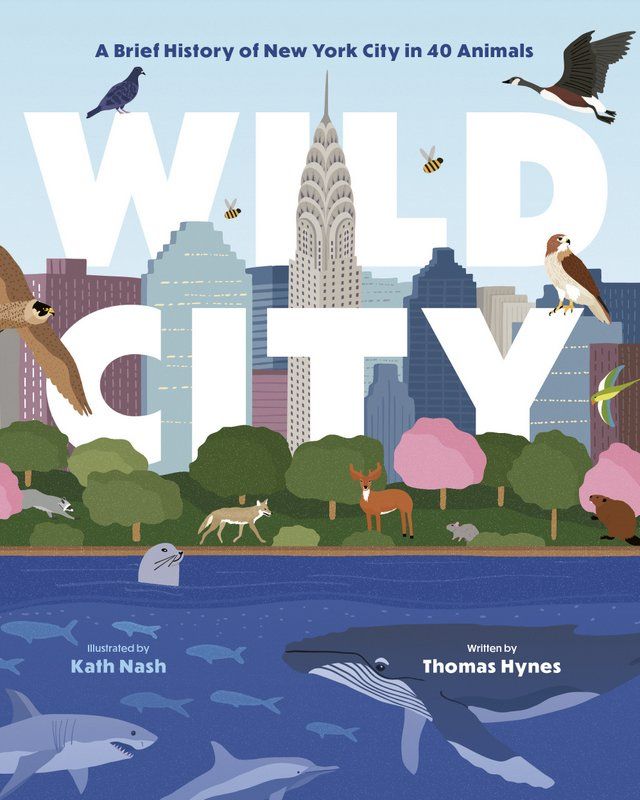Last Chance to Catch NYC's Holiday Notalgia Train
We met the voices of the NYC subway on our nostalgia ride this weekend!


Thomas Hynes is the author of the new book Wild City: A Brief History of New York in 40 Animals and a longtime writer for Untapped New York. Here, he provides us with a fabulous story that did not make it into the book. You can join Hynes and Untapped New York founder Michelle Young at the virtual book launch of Wild City, hosted by Greenlight Bookstore next week on May 27th.
In the very early hours of June 4, 1904, Frank Krissler and a friend were fishing off the eastern coast of Staten Island in New York Harbor when they heard “an unearthly sound” coming from the water. The weather was thick and visibility was low. But, even if they could see what was causing the ruckus, surely they would not have believed their eyes. They guessed it was a whale, or perhaps, for some reason, a rhinoceros.
According to The New York Times, “The echoes of the first sounds had hardly died away when a second and more powerful noise rent the air, and then the rowboat began to roll and the fishermen realized that the commotion was coming their way.” They had encountered, rather incredibly, an elephant.
The two men rowed their boat back to shore as quickly as could be, all the while being followed by the elephant, who, to their good fortune, appeared meek and friendly, perhaps a bit hungry, but not at all threatening. Though she did spray gallons of water over them. On the beach, they were met by two other fishermen and one Patrolmen O’Rourke. Together, they lassoed the elephant and led her into town. Along the way, she ate a wagon-load of vegetables outside a grocery store, helped herself to a few gulps of water from a horse trough, and apparently tore up some trees. In other words, she was behaving like a typical elephant.
At the New Dorp Police Station, she would be charged with vagrancy and kept in the stables. According to the Brooklyn Daily Eagle, she ate a month’s worth of hay while waiting inside the police horse stable.

Photo from Library of Congress
The elephant, Alice, belonged to Frederick Thompson of Luna Park in Coney Island, across the Narrows in Brooklyn. Thompson made headlines a year earlier in 1903 when he electrocuted one of his elephants, Topsy, at Luna Park in front of hundreds of spectators, in a horrendous and very public act of animal cruelty.

Topsy being electrocuted. Photo in public domain from Wikimedia Commons.
Now, just a year and a half later, Thompson was technically missing three of his elephants. Two were quickly recovered. But, not Alice. The Brooklyn Daily Eagle, in that same article mentioned above, summed up the incredulity, writing, “The Coney Island police, who have the reputation of being wide awake, declare they saw no elephants, snakes or anything wandering through the streets this morning, and they wonder how it is that, if the elephants did get out, two of them got back without the other.”
Thompson and Luna Park implored the public to be on the lookout for a stray elephant, as if anyone could miss such a thing. A notice that ran in the same issue of The Brooklyn Daily Eagle on June 3, 1904, read, “If any man, woman or child at Coney Island this afternoon or night should happen to run across a big elephant on any of the streets of that place and will kindly return the animal to its coop in Luna Park, Messrs. Thompson & Dundy will be very much obliged and will give the finder a free pass to anyone of the attractions in the grounds.” They also offered $100 as a cash reward, which, adjusted over time for inflation, would be worth about $3,000 in 2020.

Alice swam through the Coney Island Creek
Instead of turning up near Coney Island like the other escaped elephants, Alice took to the water. Specifically, she went north out of Luna Park, crossing Neptune Avenue around West 12th and slipped into the Coney Island Creek. From there, she swam west undetected past the Coney Island Lighthouse and continued another five miles across one of the busiest ports in the world where the fishermen spotted her off the Staten Island coast just before dawn.

Alice swam past the Coney Island Lighthouse
Eventually, Pete Barlow, the ‘Coney Island Elephant Man’ arrived to bail out Alice. He walked her back to the St. George Ferry landing where she was lured with apples and more hay into a wagon. They sailed for Manhattan, where they changed boats and arrived back in Brooklyn. From there, Alice walked the remaining miles back to Coney Island.
Four years later, in 1908, Alice moved uptown to live at the Bronx Zoo. Shortly after she arrived, zookeepers reported that she had gone on a rampage. Though, perhaps, she was trying once more to escape.

See more of these great stories in the new book Wild City: A Brief History of New York in 40 Animals. You can join Hynes and Untapped New York founder Michelle Young at the virtual book launch of Wild City, hosted by Greenlight Bookstore on May 27th.
Subscribe to our newsletter